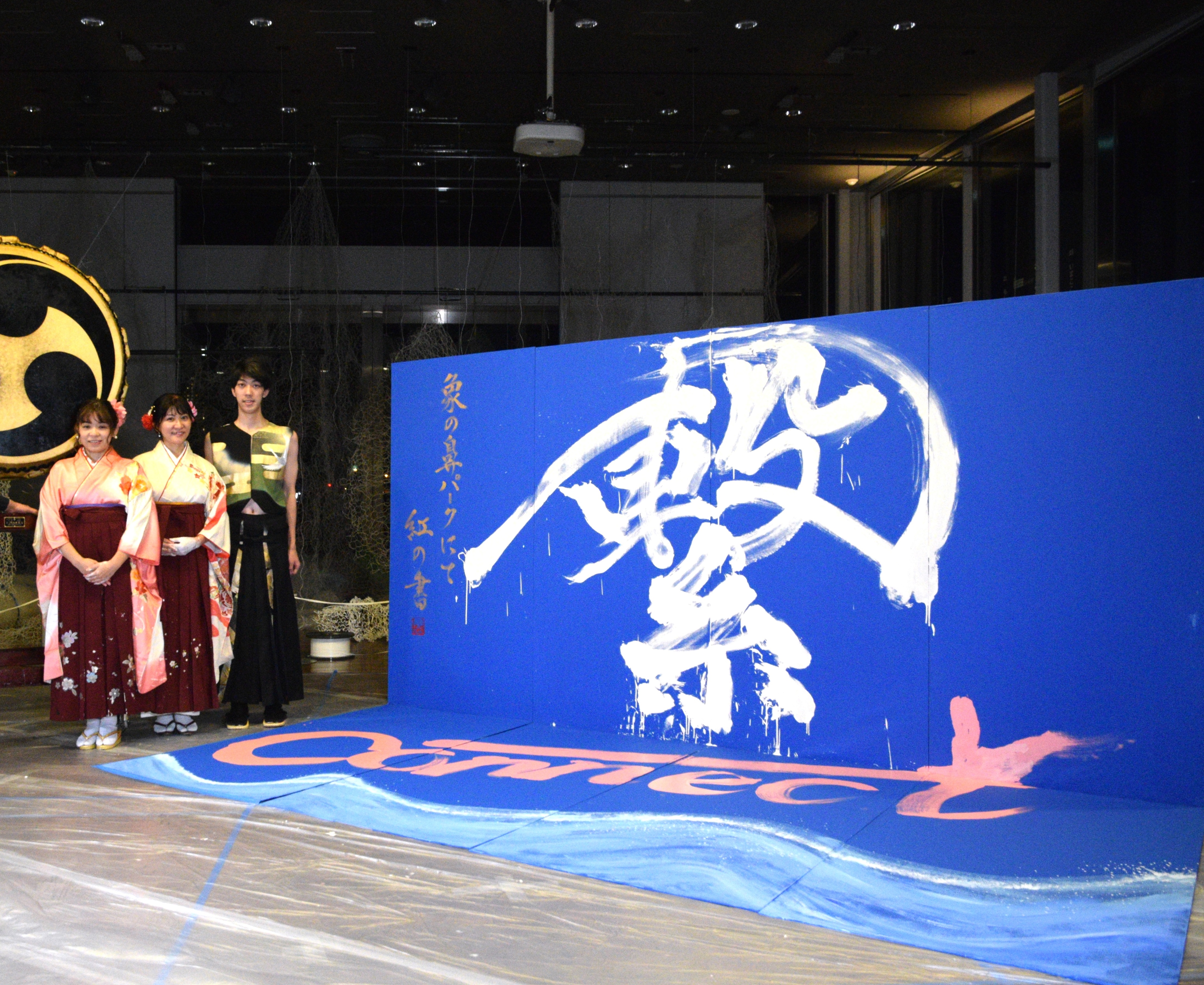We recently had the pleasure of attending a reception party for an international conference to report on the Awazu Family Shodo Performance, presented by shodo (Japanese calligraphy) artist Awazu Kōka, her daughter Kōsen, and son Kōsho. The city of Yokohama has long been a stage for such global exchange, with the national and local governments alike hosting international events here. The city also has a large international community. Shodo performances by this group have become a common feature at receptions for such events, both welcoming guests from abroad to Japan and showcasing Japanese culture.
The event we attended showcased a mother-daughter performance. Dressed in kimono with their sleeves rolled back, they moved their bodies with dynamic motion to perform shodo on a 2m x 5m sized paper while the sound of shinobue (Japanese transverse flute) plays to steady drum beats. The movement of their brushes is full of energy. Seeing two lithe women put on such a powerful performance is magic to the eyes. After looking at the work from several paces back and taking a breath, they laid their brushes to rest, concluding the performance. Even if you are not familiar with the kanji they painted, you’ll find your eyes naturally following the tips of their brushes. Everyone in attendance finds themselves focused on that before long. Of interesting note, they have mentioned that they don’t hear a thing when they are immersed in their performance.
As for the artists, Kōka was born into a family where her great grandfather and grandfather were also shodo artists. She looked up to her older sister who was learning shodo and first held a brush at age three. It gave her joy and she practiced hard every day. When she reached 5th grade, she saw one particular work at the Japan Fine Arts Exhibition (Nitten) and decided to pursue a career as a shodo artist. At the time, she couldn’t read the kanji but was fixed there, utterly impressed by how a single work could so move one’s heart.
The next milestone came twelve years ago when an organizer of an event in Paris told her, “Rather than sending works from Japan, people in Paris would be much more impressed if they saw an actual artist come and perform. Would you be interested in coming to Paris?” It would also be the first time she had to perform shodo on a drawing board taller than her. She notes that, at first, she wasn’t sure if people in Paris would be able to appreciate it, but the performance was a great success. She remembers that after she finished and looked back, she was surrounded by a crowd of people clapping hands and shouting bravo. Some were even crying. At that moment, according to Kōka, she recalled the day she decided to become a shodo artist. Even if there’s no explanation or viewers can’t read it, shodo can be quite moving. That’s its power.
Kōka currently gives shodo performances more than thirty times a year. She also teaches at thirteen locations, including her own school, the Kouka Shodo School. Students’ ages vary from two to ninety-two, covering beginner to master levels. Her private lessons are often taken by politicians and celebrities as well. Unlike her wild and dynamic performances, she has a very gentle, feminine personality. In her free time, she likes to travel to remote areas of scenic natural beauty, or visit Kabuki theaters and museums to refresh her mind and spirit.
At the end of our interview, we asked what shodo means to her. She replied: “A bridge for connecting Japan and other countries, generations, and my daughter and son. There are no goals, and the learning never ends.”


